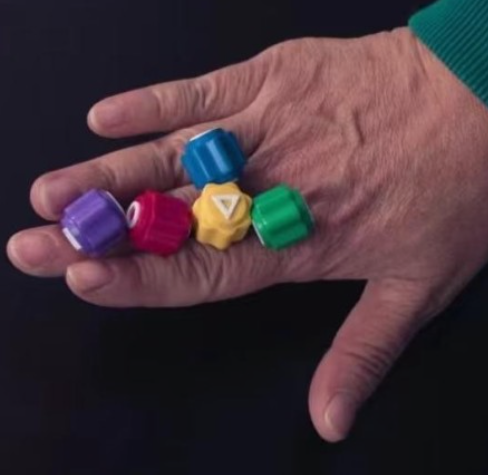
Gonggi in "Squid Game" and Its History

What is Gonggi?
Gonggi is a traditional Korean game played with five small stones or metal pieces known as gonggi stones. The game's fundamental principle is to use dexterity and focus to toss and catch the stones. Gonggi is easy to play anywhere due to its simple rules and equipment, making it a beloved pastime for many generations.
Gonggi is found in various forms across East Asian countries, with materials and rules differing by region. In traditional Korean society, particularly during the Joseon Dynasty, gonggi was primarily enjoyed by young girls. However, today it has become a universally enjoyed game for people of all ages and genders.

Gonggi in "Squid Game"
The Netflix series "Squid Game" features traditional games as key elements in its deadly competitions. Gonggi is among these games, appearing in a high-stakes scenario where characters compete for survival. In this context, gonggi transforms from a childhood pastime into a tool of intense psychological tension.
The method of playing gonggi in "Squid Game" closely resembles the traditional version. Using five gonggi stones, players follow specific rules to toss and pick up the stones in sequence. In the show, the game becomes more than a mere contest of skill, evolving into a mental battle that leaves a strong impression on viewers.
How to Play Gonggi
- Preparation: Scatter five gonggi stones on the ground.
- Stage 1 - Picking Up One by One: Toss one gonggi stone into the air and pick up another from the ground before catching the tossed stone. Repeat this process until all stones are picked up.
- Stage 2 - Picking Up Two at a Time: Toss a stone, then pick up two stones at once before catching the tossed stone. Repeat until all stones are collected.
- Stage 3 - Picking Up Three at a Time: Pick up three stones in one go following the same process.
- Stage 4 - Picking Up Four at Once: Finally, pick up all four remaining stones at once.
- Final Stage - Special Rules: Additional rules, such as balancing stones on the back of the hand or using specific fingers, may vary based on regional or personal preferences.
The History of Gonggi
The origins of gonggi are not precisely documented, but similar games have been found across East Asia, including Korea, China, and Japan. In ancient times, stones or animal bones were used, serving as tools to develop hand dexterity and enhance social bonds.
In Korea, records from the Joseon Dynasty describe gonggi as a game primarily enjoyed by young girls. However, it was accessible to people of all genders and ages. In modern times, gonggi stones are often made from plastic or metal, making them easy to obtain and popular as a recreational activity.
The Modern Significance of Gonggi
Today, gonggi transcends its role as a traditional game to become a cultural heritage. Modern media, such as "Squid Game," have spotlighted gonggi, drawing international attention to Korean traditional games. Gonggi enhances hand-eye coordination and focus while being an easily accessible and enjoyable pastime for everyone.
The game also evokes nostalgia, reminding players of cherished childhood memories. By fostering intergenerational connections, gonggi symbolizes the enduring nature of Korean culture.
Conclusion
Gonggi is a timeless Korean traditional game that has captivated people for generations with its simplicity and charm. Its global recognition through "Squid Game" has highlighted its cultural value, ensuring its continued prominence as a representative element of Korean heritage. Experiencing the joy and skill of gonggi firsthand is a great way to appreciate its lasting appeal.